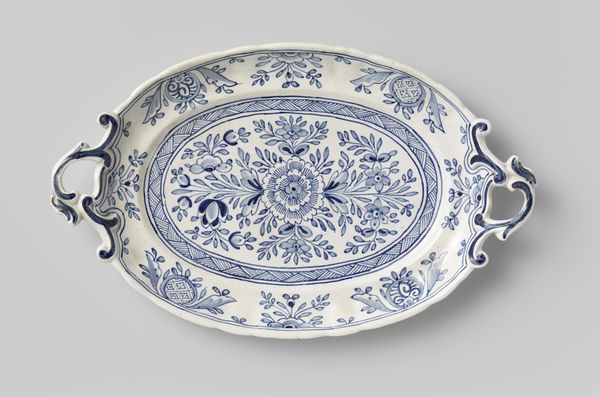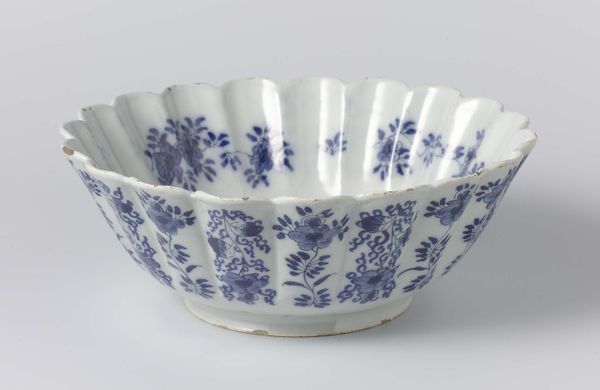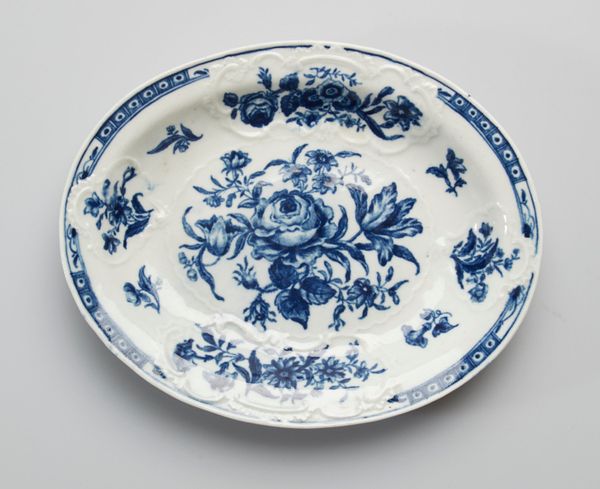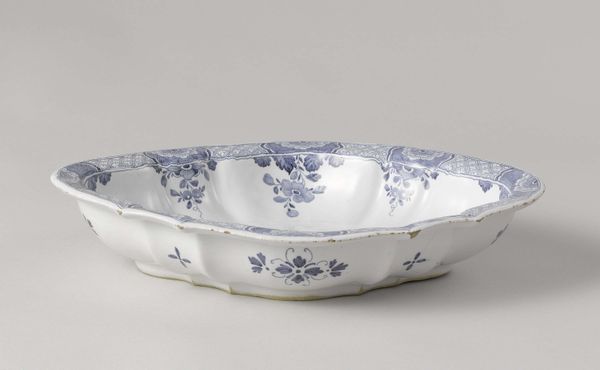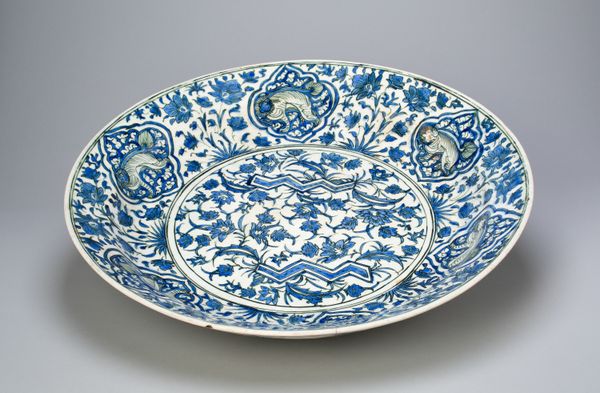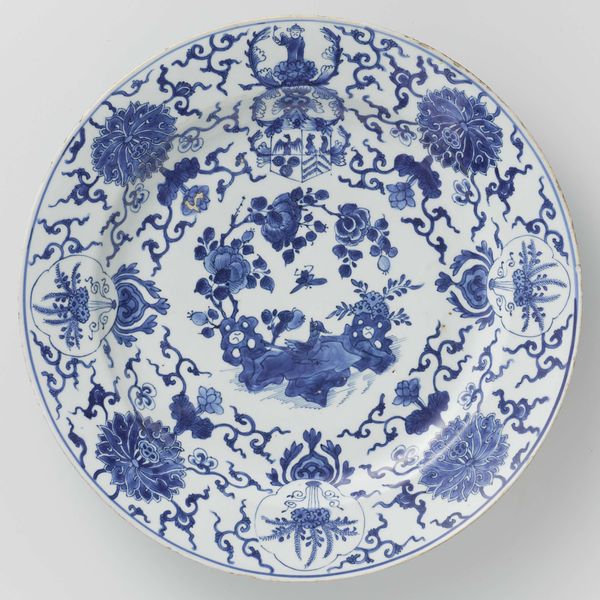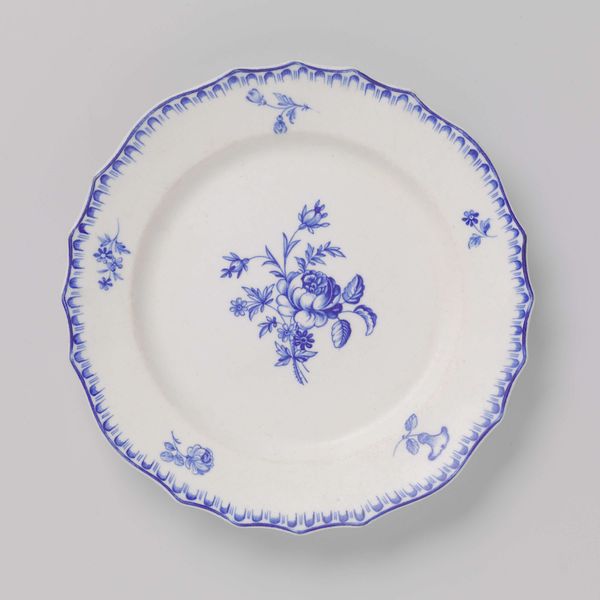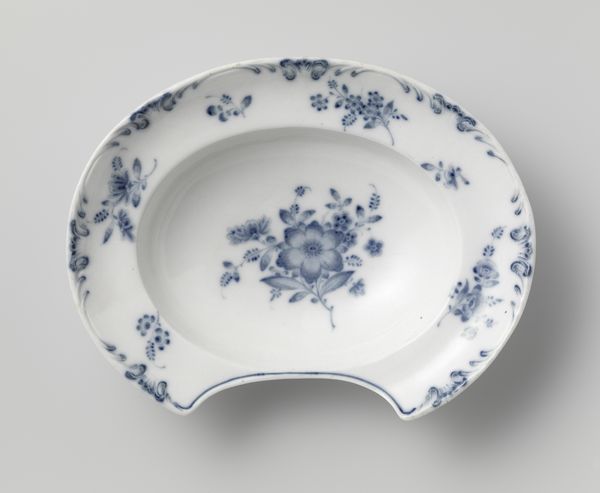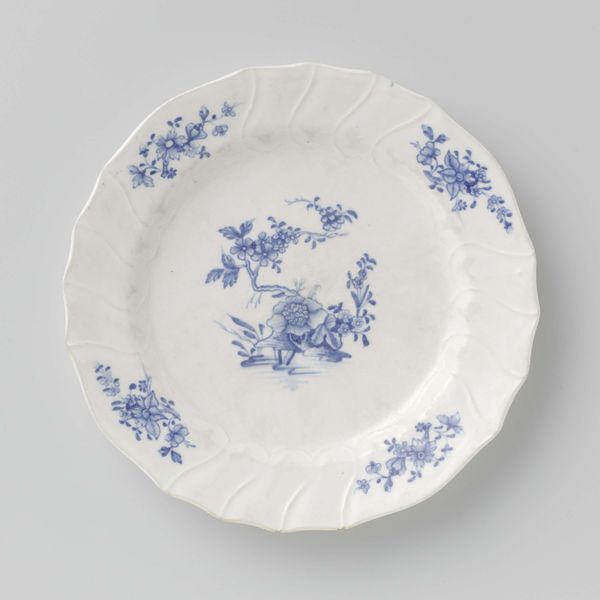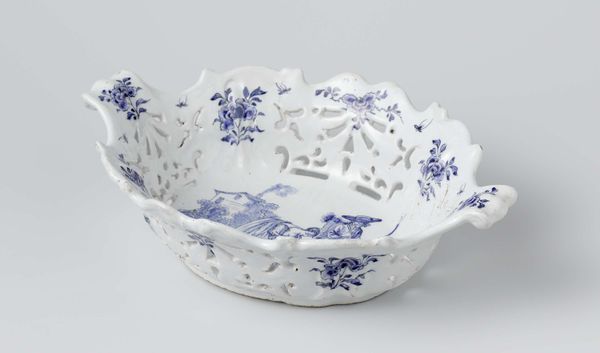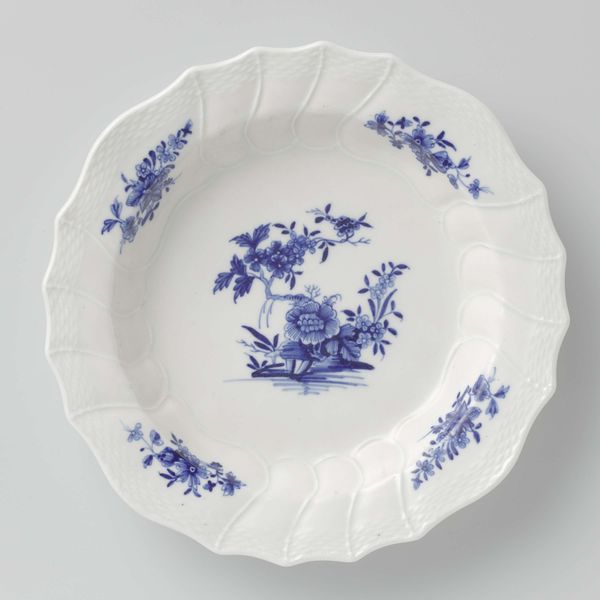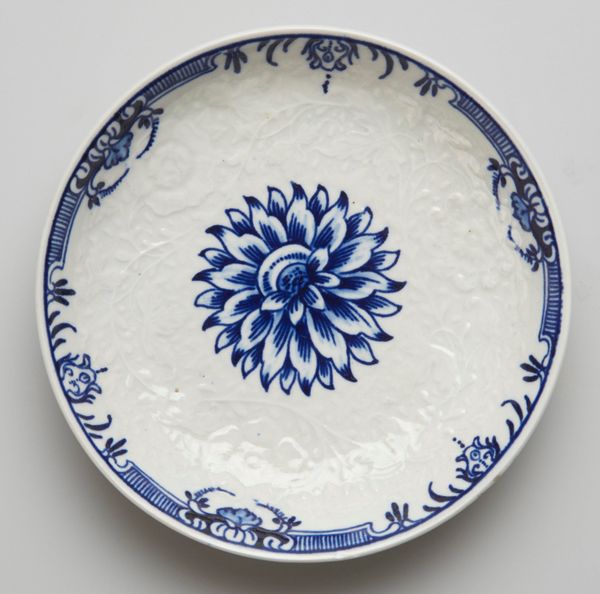
ceramic, earthenware
#
dutch-golden-age
#
ceramic
#
earthenware
#
stoneware
#
ceramic
#
islamic-art
Copyright: Rijks Museum: Open Domain
Here we have a faience 'Zuurbak,' or sweetmeat dish, by De Paauw. Though not explicitly dated, these objects were common in the 18th century when the Netherlands saw the rise of the Dutch East India Company. These dishes are more than mere vessels; they are artifacts of global exchange, colonial ambition, and domestic ritual. The blue and white floral pattern, for instance, evokes the coveted porcelain of China, reflecting the global trade networks that enriched the Netherlands during this period. These dishes were used to serve sugary treats and spices, and are a window into the rituals of consumption and display that defined the era’s social hierarchies. The act of sharing sweets from such a dish wasn’t just about hospitality, but about performing social status. Consider how this small dish reflects the larger world, connecting personal enjoyment with colonial history.
Comments
No comments
Be the first to comment and join the conversation on the ultimate creative platform.
